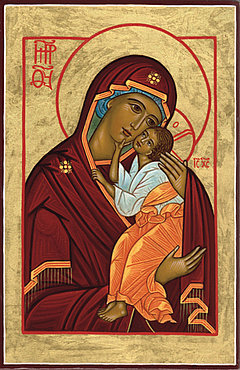
Since the fall of the Soviet Empire, and also since the election of a Polish Pope, John Paul II, to the throne of Peter in Rome, the world has discovered or rediscovered the unique art of Christian iconography. Icons are the "visible image of the Invisible," designed in prayer and for prayer.
From the Middle East, and especially with the conversion to Christianity of the Byzantine Emperor Constantine (in the 4th century), the Christian icon spread throughout the Mediterranean basin, reaching Slavic and Eastern Europe and Asia: from Greece to Egypt via Lebanon, Syria and other Palestinian areas; to Kazakstan and Teheran via Saint Petersburg, Moscow, Tbilisi or Baghdad! Although many of these masterpieces have been lost over time, some have survived the centuries and belong to the universal heritage of sacred art. Among them, the famous "Christ Pantocrator," the even more renowned "Image of Edessa" (representing the face of Christ), and the famed "Trinity" by Rublev.
The most famous icons of Mary
Among Marian icons, the best known are:
The 12th-century “Virgin of Vladimir,” which went from Constantinople to Kiev, then to Moscow;
“Our Lady of Kazan,” dating from the 13th century, passed through many turbulent times and came in the possession of the Vatican, until Pope John Paul II decided to return it to the Orthodox Patriarch Alexis II of Moscow;
“Our Lady of Czestochowa,” a Black Madonna preserved in the monastery of Jasna Gora in Krakow and which appears to be the 14th-century copy of an original believed to have been painted by Saint Luke;
The Marian icons of Mount Athos: this very ancient Eastern Christian monastery is home to the most prestigious collection of Christian art in the world, including the series of "portable icons," which are very ancient and particularly well preserved;
The Marian icons of Mount Sinai, found at St Catherine’s Monastery. Among those is the oldest known icon: the "Virgin in Majesty";
The icons of the Syrian monastery Our Lady of Saydnaya;
The famous “Virgin Theotokos,” whose original is in Istanbul.
And this is just a short list.